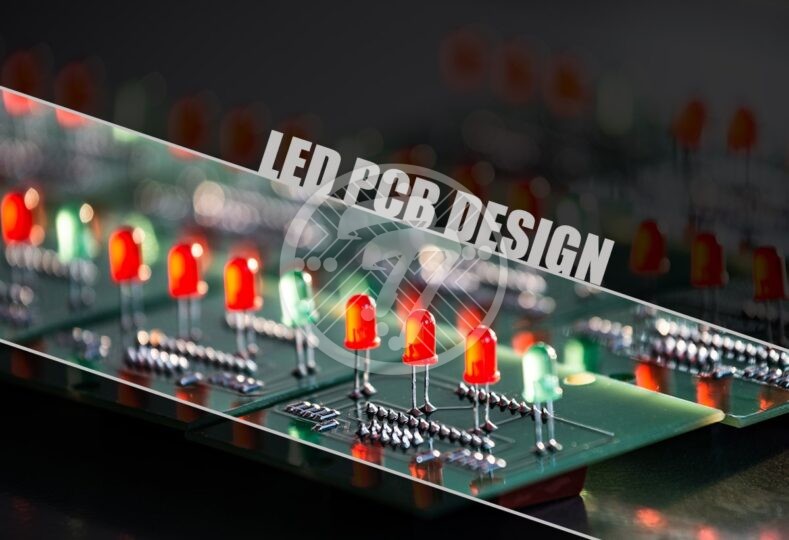LED PCB design guide – What are the design considerations?

The use of LED PCBs must quite an extent become ubiquitous with many applications making use of them. In fact, the use of LEDs in standard printed circuit boards is quite a technological revolution. They offer several advantages including but not limited to:
- Low Cost.
- High on efficiency in terms of power consumption.
- Compact structure including their light weight and small size.
- Resistance to dust & moisture.
- Improved lifespan, and more.
To avail of the many advantages offered by LED printed circuit boards, however, it is imperative that some key design aspects be kept in mind. Here is a quick look at some of them.
Key considerations in LED PCB design
Component placement
One thing that is crucial when it comes to LED PCB design, it is proper component placement. With the right component placement you can not only ensure easy manufacturability but also ensure quality.
It is important to maintain a certain distance when it comes to placement of components on the board else it can lead to overvoltage. It is therefore important to consider two aspects:
- Creepage or the shortest distance between components.
- Clearance or the distance between components measured through the air.
It is also important to ensure that the components are not placed near the PCB outline. Placing components towards the edge can lead to dislodging of components.
Also, it must be kept in mind that all Surface Mounted components follow the SMD PCB design rules. Through-hole components similarly must be placed on top of the board so that the number of steps required for assembly, are optimized.
As for blind and buried PCB vias they should not be placed too close to SMT pads as doing that can mean that the solder can migrate away from the pad. In such situations, there is the possibility of a faulty joint. As a thumb rule, therefore, a distance of 0.025 inches or more should be maintained between the vias and the SMT pad.
PCB materials
While considering the PCB design, it is also important to take into account the material used. The two popular choices include FR4 and IMS or what is known as Insulated Metal Substrate. In choosing the PCB material you need to be mindful of the fact that it not only ensures that excess heat is removed from the board but it also provides electric insulation.
When it comes to the metal base layer, aluminum is a popular choice as it ensures thermal management.
Thermal management
High temperature can impact the longevity of LED lights. To ensure thermal management, therefore, the following are used to dissipate heat:
- Aluminum Cores
- Thermal Vias
- Heat Sinks
For thermal management it is also important that the right component placement be undertaken.
Tracking
Careful tracking is a prerequisite in order to ensure there are no short circuits or crosstalk. If there is proper trace routing, you can rest assured that there is no interference from other networks. The right track width also goes a long way in preventing overheating. It is also important to pay due attention to:
- Tracking Space
- Mounting Holes
Finishes
The finish of the board helps in protecting the copper as also offering a soldering surface. Some of the common finishes include:
- HASL
- OSP
- Electrolytic Nickel
- Electrolytic Gold
- Immersion Tin
- Immersion Silver, and more.
The pros and cons of each finish need to be carefully ascertained.
To Sum Up
When it comes to LED PCB, we need to ensure that the following challenges are suitably mitigated:
Heat – The design should ensure that there is optimal thermal management so that longevity is maintained. This is because the temperature of the LED circuit has an inverse correlation with the longevity of the LED.
Color of the light – Once the temperature of the LED circuit increases the colors of the LED can change. Therefore proper heat dispersal is key.
Efficient PCB design, therefore, is a key aspect of manufacturing the right LED solution. It is imperative that you choose the right partner who has the requisite industry knowledge and can also ensure that the PCB designs are customized to the bespoke needs of your applications.
At Technotronix, we are fully equipped to handle your LED PCB manufacturing requirements. With over four decades of experience in delivering high-quality, on-time, competitive price products, you can bank on us for your PCB requirements. In case you have any questions regarding LED circuit boards, please feel free to contact us via email at [email protected] or call us at 714/630-9200.






